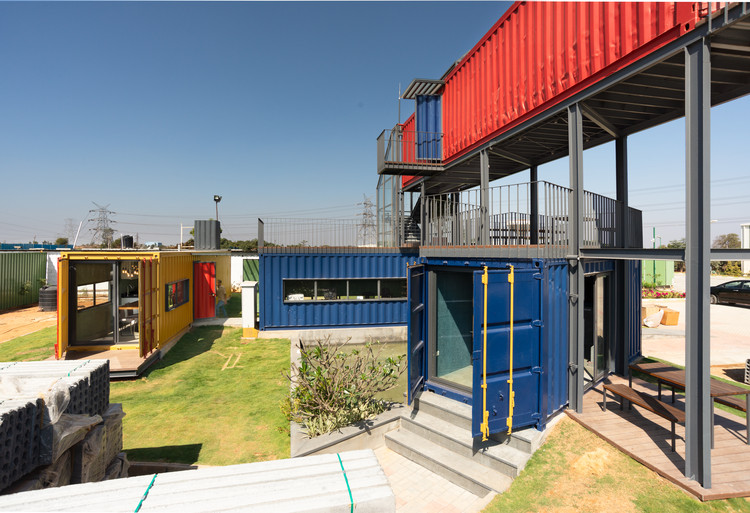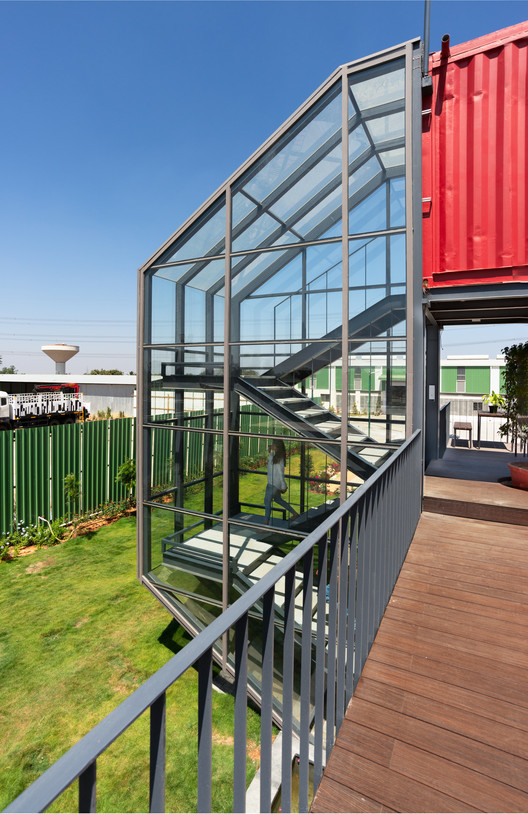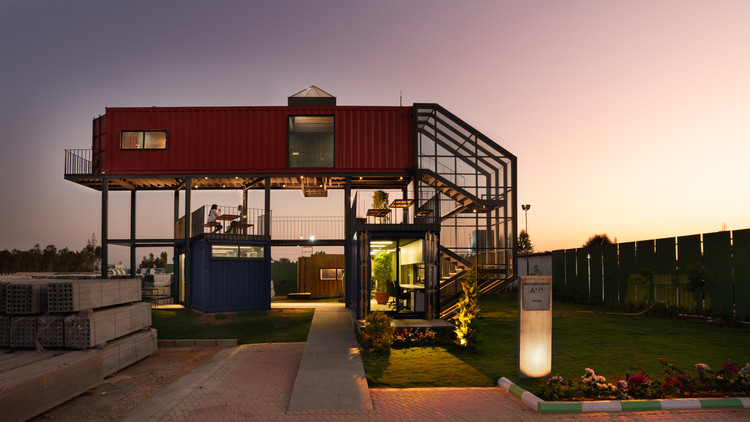
-
Architects: Balan and Nambisan Architects
- Area: 1500 ft²
- Year: 2019
-
Photographs:Archana Vikram
-
Manufacturers: AutoDesk, Saint-Gobain, Adobe, Asian Paints, Greenlam, Marino Laminate, Microsoft, Trimble

Text description provided by the architects. We were approached by one of the leading manufacturers and suppliers of precast concrete slabs and pavers for our design consultancy services. Their company is a subsidiary of a well-known builder group. When the client came in with his requirement and with the whole spiel of being a green tech company, there had to be an underlying and a pertinent story to the design. To recycle was going to be centric to the design story and the container was the obvious choice. The versatility and the ability of an entity like this to morph into a statement piece in terms of a built space was something that drove the design intent.



Starting from the concept of a compact workspace design within the culture that mixes detachment, sustainability, less waste generation, upcycling and exerts a brake on intensified consumerism, the containers follow the idea of a mini den where the users have all the convenience and technology in a small space Our team upcycled 4 secondhand shipping container into a compact 1500 square-feet space with a workstation, experience centre, dining/pantry, outdoor deck and a set of toilets.



Our aim was to synchronize the building with the site context and at the same time also mark it unique. The bright red, chirpy yellow and dark cobalt blue containers paint a pretty picture against the sunny skies, landscaped surroundings, and the existing monotony of the metal green-hued factory structures. Thus drawing the attention of potential customers. Large glazing of the cantilevered staircase merges the rigid built form with the landscape. The landscape complements the industrial nature of the architecture, and also promotes activity, and consequently, adds vibrancy to the entirety of the site.

These structures become extremely hot in warm weather conditions if the insulation is not effective. Passive cooling and insulation were provided using novel rock wool and strand board paneling for the ceiling and wall surfaces. The arrangement of spaces around a courtyard with a water body and the strategic placement of windows and openings make the building perfectly adequate in extreme weather conditions. Exposed service lines were carefully planned to drain out rainwater to avoid rusting of the exterior surfaces. We made the thrifty use of materials as we strongly believe in Less is More.
































